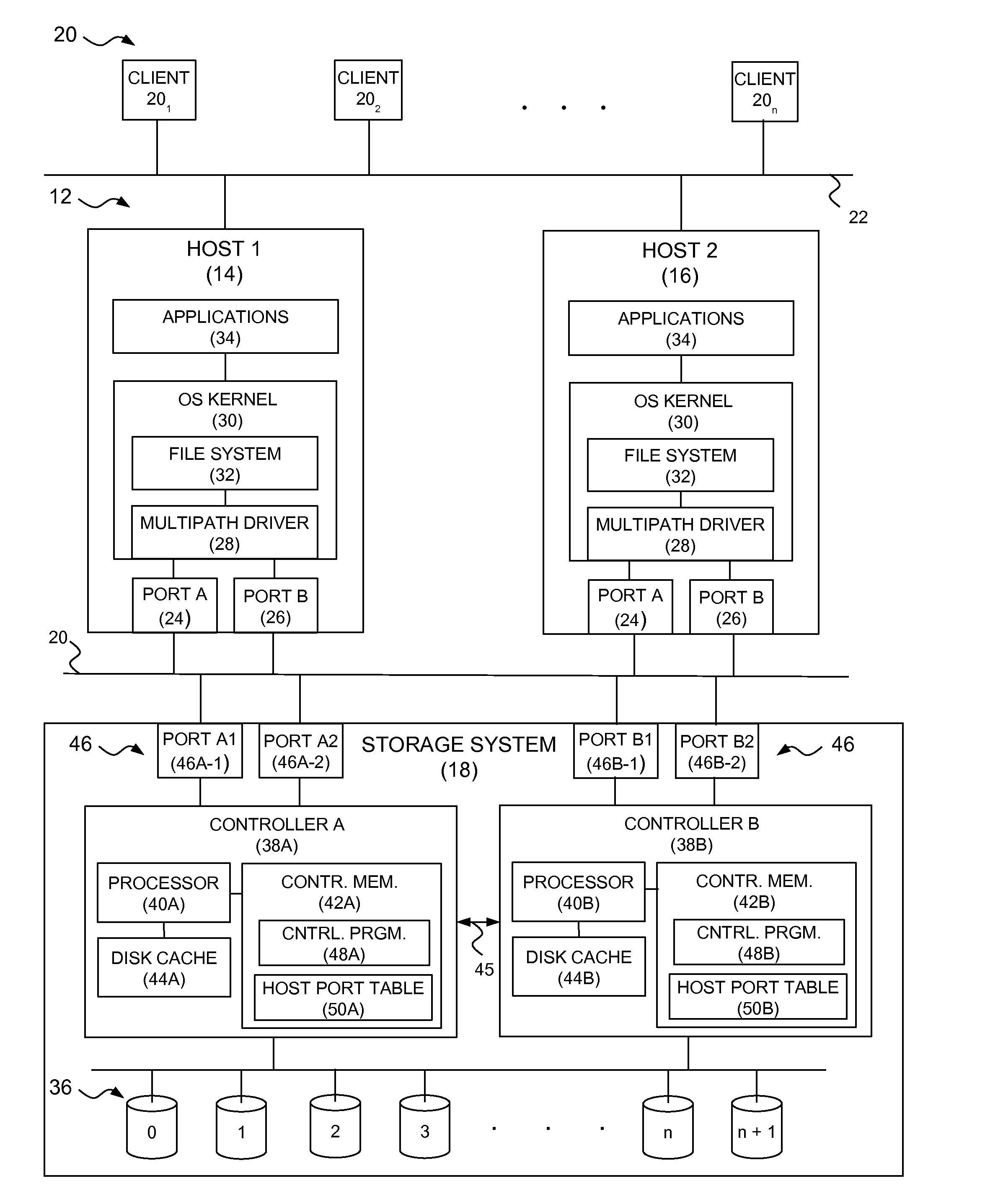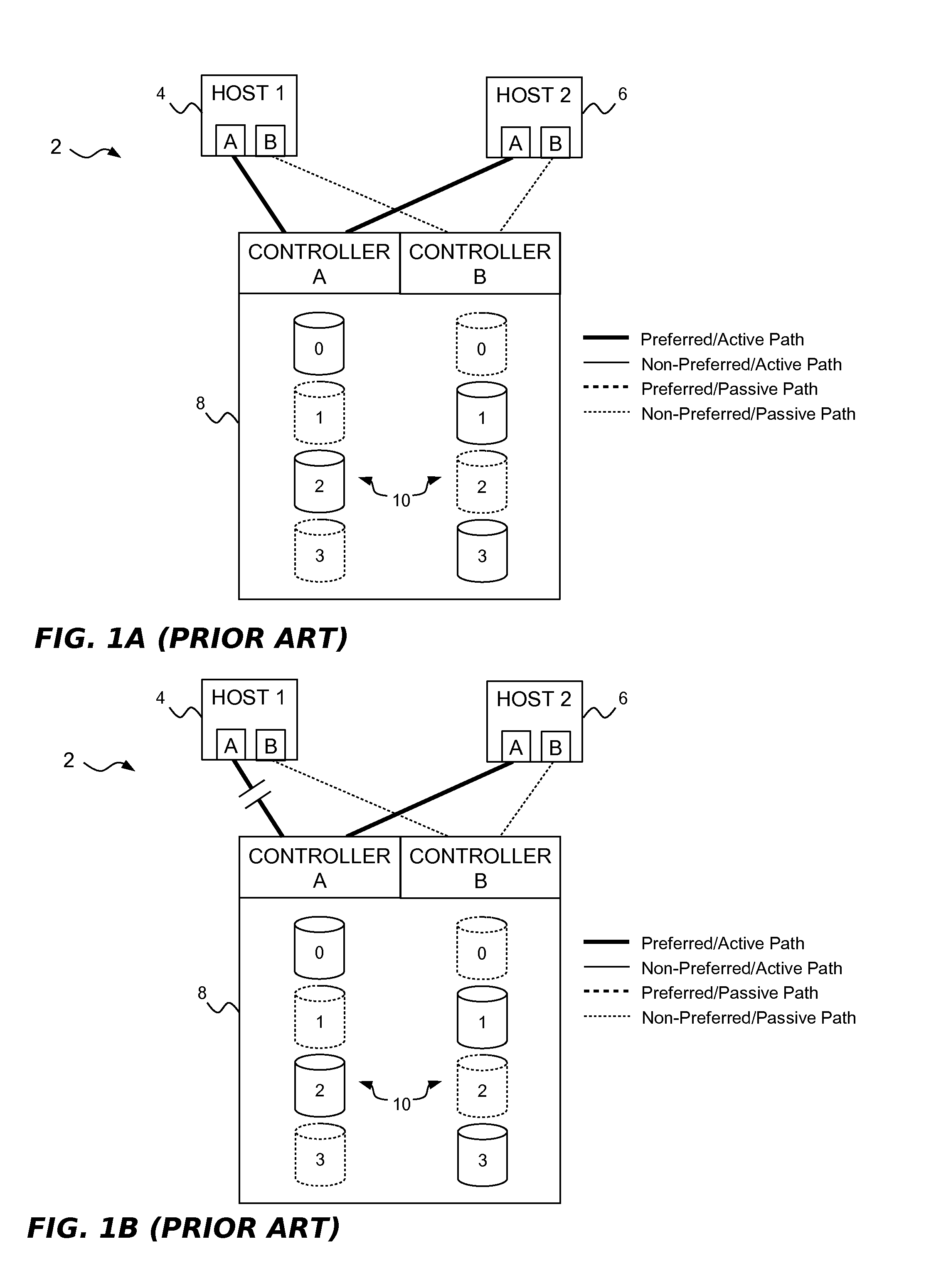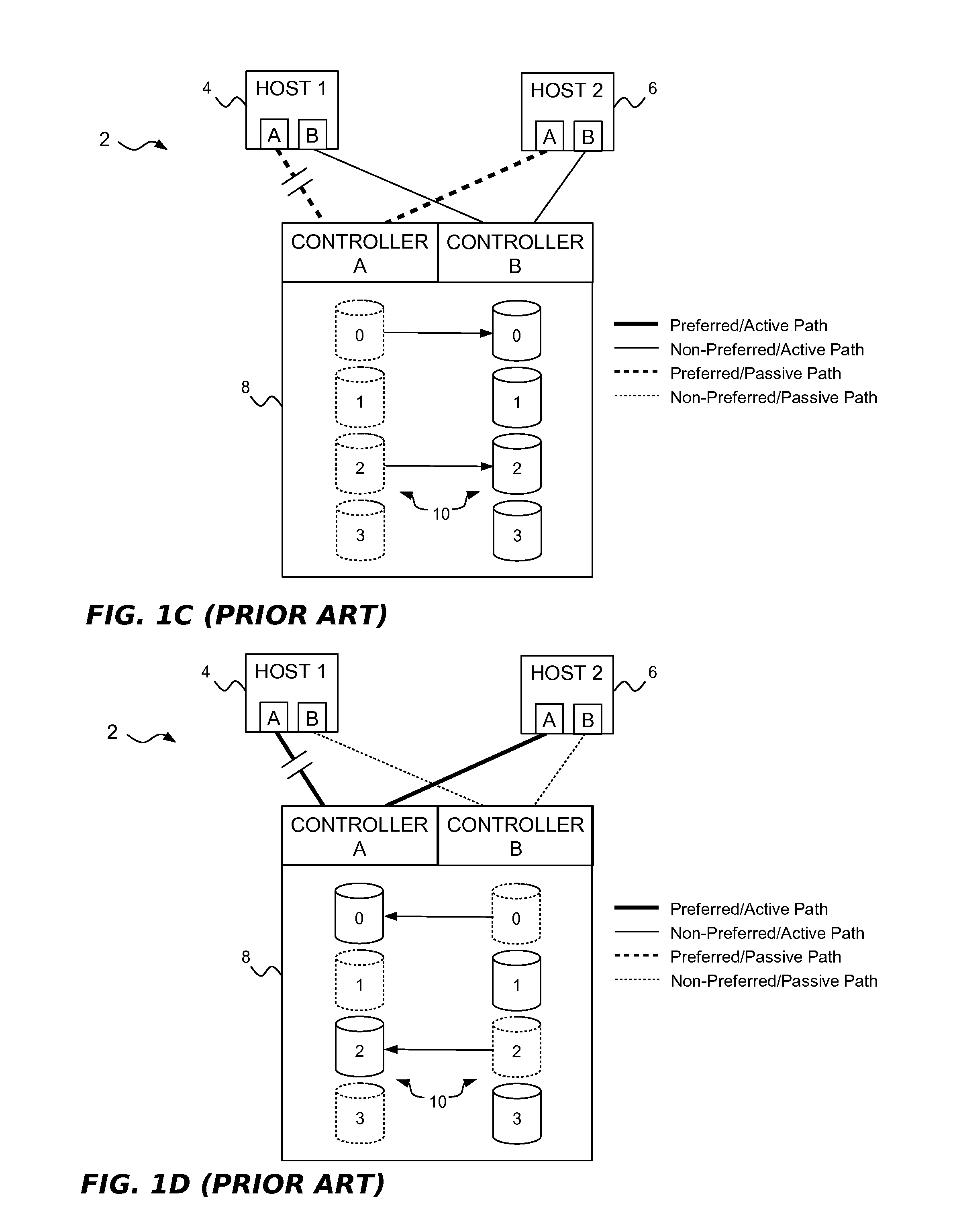Avoiding A Ping-Pong Effect On Active-Passive Storage
a passive storage and active path technology, applied in error detection/correction, redundancy hardware error correction, instruments, etc., can solve problems such as unwanted performance problems, path failures, and host no longer being able to access active paths
- Summary
- Abstract
- Description
- Claims
- Application Information
AI Technical Summary
Benefits of technology
Problems solved by technology
Method used
Image
Examples
example embodiments
[0021]Turning now to the remaining drawing figures, wherein like reference numerals represent like elements in all of the several views, FIG. 2 illustrates a distributed data storage environment 12 that supports an efficient technique for avoiding the above-described ping-pong effect on active-passive storage. The storage environment 12 includes a pair of host systems 14 (Host 1) and 16 (Host 2) that are interconnected to an intelligent storage system 18 by way of a conventional communications infrastructure 20. The communications infrastructure 20 could be implemented in many different ways, including as a set of discrete direct link connections from host to storage system, as an arbitrated loop arrangement, as a switching fabric, as a combination of the foregoing, or in any other suitable manner. Regardless of its implementation details, the communications infrastructure 20 will be hereinafter referred to as a storage area network (SAN).
[0022]In the interest of simplicity, the sto...
PUM
 Login to View More
Login to View More Abstract
Description
Claims
Application Information
 Login to View More
Login to View More - R&D
- Intellectual Property
- Life Sciences
- Materials
- Tech Scout
- Unparalleled Data Quality
- Higher Quality Content
- 60% Fewer Hallucinations
Browse by: Latest US Patents, China's latest patents, Technical Efficacy Thesaurus, Application Domain, Technology Topic, Popular Technical Reports.
© 2025 PatSnap. All rights reserved.Legal|Privacy policy|Modern Slavery Act Transparency Statement|Sitemap|About US| Contact US: help@patsnap.com



